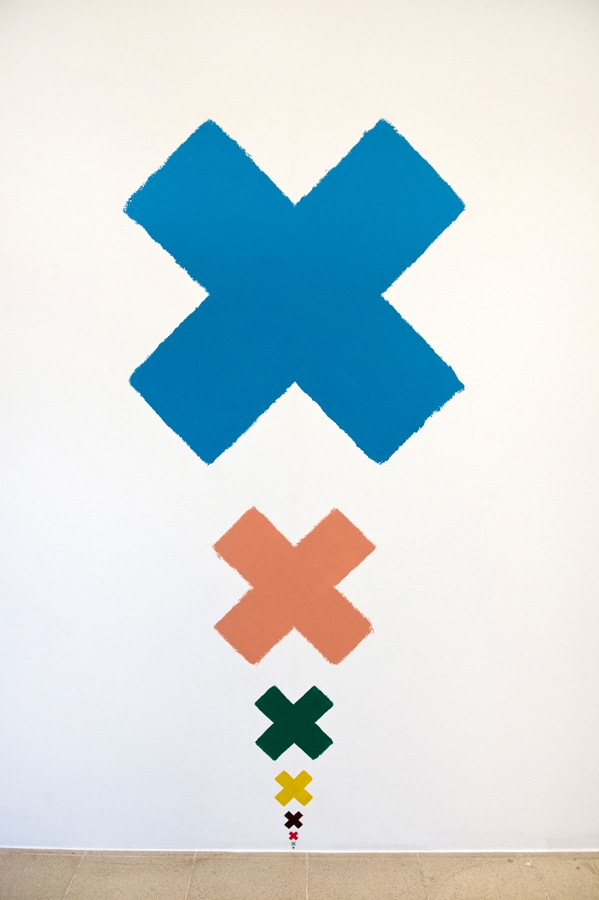I’m writing this two days before UK Mother’s Day, but it’s just coincidence that the piece that stands out most in this 30-year survey of work by Martin Creed (for more than just its physicality) is the enormous, 12.5m-wide spinning sculpture that spells out, in 2m-high white neon letters, the word ‘mothers’: Work No. 1092 (2011). It may be big and blunt, but without getting too Freudian about it, the work also highlights the more subtle and contradictory facets of the maternal parent/child relationship. When that heavy steel arm swooshes over your head, for example, the instinct is to duck, as you might from the threat of an admonishing ‘clip round the ear’; even though you know that, unless you’re 198cm tall or over, it’s not going to hurt you. The work is a celebration, but at the same time isn’t it also slightly embarrassing – a bit too big and brash, a bit too interfering?
The more of Creed’s work one sees in one place, the more it becomes obvious that it’s the artist’s feelings about making sense of being in the world that are his subject
Work No. 1092 also stands out as one of the few elements in this exhibition that makes its focus a person (or generic group of people) other than the artist. Indeed, the more of Creed’s work one sees in one place, the more it becomes obvious that it’s the artist’s feelings about making sense of being in the world that are his subject, whether that’s by lining and stacking up objects in order of size – potted cacti, cardboard boxes, rusty I-beams – or trying to connect things, such as producing 1,000 prints using different heads of broccoli on square pieces of paper measuring 18cm on a side, after realising that a head of broccoli, Creed’s favourite vegetable, was on average the same size (18cm) as a seveninch single.
In a hang that opens up and makes full use of all the Hayward spaces, from toilets and balconies to stairs, lifts and doors, these repeated attempts to make sense of the chaos of life become more heightened – at one extreme by containing and ordering the chaos, and at the other by splurging it all out, as in the ‘Shit’ and ‘Vomit’ films (Work No. 660, 2007, and Work No. 610, 2008), in which volunteers are seen against a stark white background, respectively shitting or vomiting. Then there’s Creed’s music, which sits somewhere in between. What also becomes apparent is the awareness that, as an audience, what we get caught up in is not only the recognition of those feelings in ourselves, but also Creed’s mostly playful, sometimes uncomfortable but always deeply felt desire to express them.
In that sense perhaps every work here is a form of self-portrait – although there are also three traditional self-portraits that punctuate the show, and which also stand out for being as different in style as the artist’s own appearance has been over the years – in terms of changes in hair, facial hair and glasses. The earliest portrait is an accomplished acrylic on board, in a Paul Nash palette, from 1984; the second a photograph of Creed with a Cheshire Cat grin from 2003; and the third a more melancholy face, from 2013, rendered in coloured pencil and acrylic, that stares out from a circular black ground, as if looking out from a porthole.
Creed playfully titled his show What’s the Point of It? As a question, it isn’t that dissimilar to asking: what’s the point of life? Thinking again about ducking under Work No. 1092’s spinning arm, I’m reminded that the most pressing point for me right now is to get that Mother’s Day card in the post.
This article was first published in the May 2014 issue.
